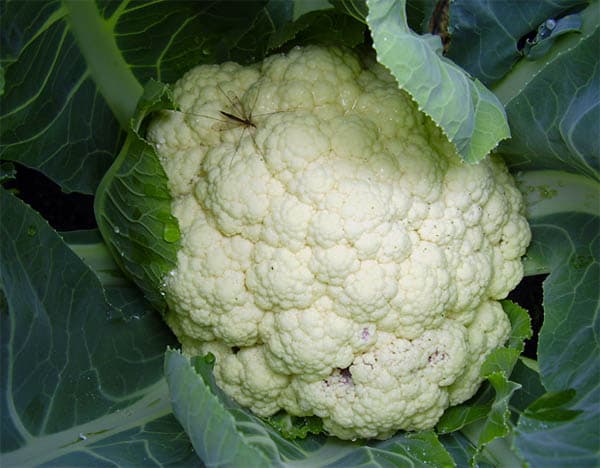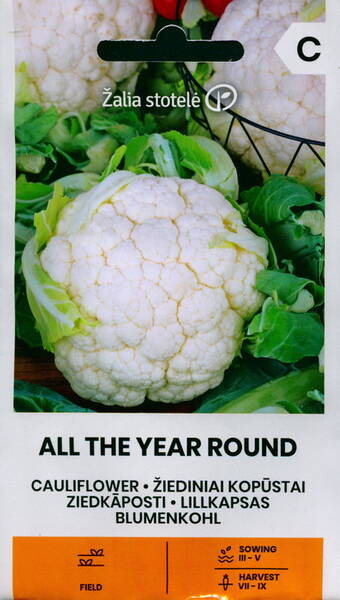Your shopping cart is empty!
Cauliflower "All the Year round"
Cauliflower "All the Year round".
In any season with a harvest!
A wonderful, mid-early (65-70 days) and high-yielding variety that retains its commercial qualities in any season.
Forms snow-white, dense and large heads, weighing up to 1.5 kg.
High productivity, friendly head formation, excellent taste, and long-term storage (up to 70 days) make this variety a favourite of the beds.
The variety is resistant to autumn frosts and a number of diseases.
Sowing for seedlings: April (picking in the cotyledon phase).
Planting seedlings in the ground: May (35-40 days after germination according to the scheme 50x30 cm).
In order for the heads to retain their white colour and not fall apart, they must be shaded from sunlight (for this, the leaves are tied over the head).
1,0 g = 500-550 seeds.
In any season with a harvest!
A wonderful, mid-early (65-70 days) and high-yielding variety that retains its commercial qualities in any season.
Forms snow-white, dense and large heads, weighing up to 1.5 kg.
High productivity, friendly head formation, excellent taste, and long-term storage (up to 70 days) make this variety a favourite of the beds.
The variety is resistant to autumn frosts and a number of diseases.
Sowing for seedlings: April (picking in the cotyledon phase).
Planting seedlings in the ground: May (35-40 days after germination according to the scheme 50x30 cm).
In order for the heads to retain their white colour and not fall apart, they must be shaded from sunlight (for this, the leaves are tied over the head).
1,0 g = 500-550 seeds.

Cauliflower. Bot.: Brassica oleracea var. botrytis L.
* People say that cauliflower is an ordinary cabbage, but with higher education.
This cabbage is finicky: it does not like either heat or cold, and in either case, it does not lay heads well, it needs a temperature of 15 to 17 degrees and the application of micronutrients, especially molybdenum, fertilized soil and good watering.
She does not like an excess of nitrogen, but when the heads begin to tie, she needs nitrogen. It is better to close the growing heads from direct sunlight by tying the leaves over them so that the heads do not lose their whiteness, although today varieties with purple heads containing iodine have appeared.












